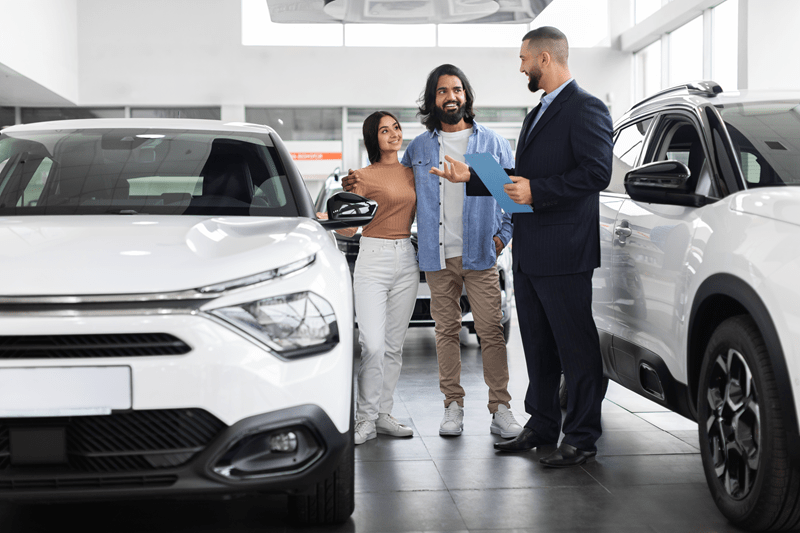
Buying a car sounds exciting at first. But once people start thinking about all the steps, it can feel like a lot. There’s paperwork, there’s insurance, there’s the actual choice of which car to buy. This simple car buying checklist makes it all easy to follow. Think of it like a calm voice in your head, guiding you through each step until you’re finally sitting in the driver’s seat, ready to go.
Before jumping into the world of shiny cars and test drives, it’s smart to stop and think. This is where a car buyer guide helps. It doesn’t tell you what to buy. It just helps you figure out what fits you best.
Start with the basics. What will you use the car for most of the time? If it’s for daily office travel, comfort matters. If it’s for family trips, space matters more. It’s not about finding the best car, but about finding the right car that matches your lifestyle.
A car buying checklist keeps you on track. You can write down things like 'needs good mileage,' or 'easy to park.' It may sound simple, but having that list in front of you helps when choices start to get confusing later.
Then, do a bit of research. Read what other people say about the cars you like. Watch videos that show how the cars perform after a few years. Small things like that give a real picture.
This is where the real fun starts. The research part. Every car buying guide says to take your time, and they’re right. It’s easy to rush when you’re excited. But reading and comparing first saves time later.
Check out reviews. Not just one or two — go through a few from different people. It helps to see what common problems show up and what people actually love about their cars. Sometimes, what looks great online may not feel right on the road.
Look for the features that actually matter to you. Some like modern screens and cameras, while others prefer simple controls. And that’s okay. Everyone drives differently.
If possible, visit a few showrooms. Sit in the cars. Adjust the seat. Feel the steering wheel. You’ll instantly know if it feels like “your” car or not.
A good car buying checklist keeps you focused. It helps you compare models side by side instead of depending on memory. When you’re well-prepared, you walk into a dealership with quiet confidence.
Now comes the part everyone wants to skip — paperwork. It’s not fun, but it’s important. Having your vehicle paperwork ready before going to the dealership makes the whole process quicker.
Here is what is usually needed:
Put these in a folder and carry it with you. It saves you from running back and forth later. It sounds small, but it makes a big difference on the day you actually buy the car.
Once you’ve chosen the car, there are two official steps that come next — insurance setup and car registration. They sound serious, but they’re pretty simple when done in order.
Insurance setup should be done before taking the car home. This keeps it protected from the moment you drive it out. Some people prefer talking to an insurance agent. Others do it online. Either way works as long as the policy begins immediately.
Then comes car registration because that is what makes the car legally yours. Usually, the dealer helps with it, but it’s still good to know the basics. You will need ID proof, address proof, and a few signed forms. Once it’s registered, you’re officially the owner.
When both insurance and registration are done, there’s this calm moment where buyers usually smile to themselves — that feeling of that it is your time now.
Must Read: How Do I Buy a Car Online? Major 7 Mistakes to Avoid in 2025

The test drive is where most people fall in love or change their mind. It’s the moment that decides everything. A test drive guide helps notice the small things that really matter.
Here’s a quick checklist to follow during the test drive:
Take your time and do not hurry. Drive it on small roads, maybe even park it once. Sometimes, what feels great at first may feel heavy later. Trust that gut feeling.
A car buying checklist reminds you to test drive more than one car. Comparing how each feels helps you pick the right one, not just the popular one.
We’re not talking about numbers here, but it’s still good to understand how car pricing works in general. Think of it as comparing what each car offers, not what it costs.
Car pricing depends on many things — safety features, comfort, and design. Some cars feel great to drive but may lack features. Others have everything but may feel too complicated.
This is why comparing different models helps. You can check some online articles, reviews or watch owner videos. Ask people who already drive that model. When you collect small bits of information, you start to see what’s truly worth choosing.
A good car buying checklist keeps this comparison organized. It helps you focus on what really matters instead of getting lost in endless options.
This is the exciting part — the final day. But before the car leaves the lot, there are a few last checks to make.
These steps take only a few minutes but give peace of mind. Once it’s done, take a slow breath, smile, and enjoy that first moment. That’s the reward for all the planning and patience.
A car buying checklist isn’t just about steps and papers. It’s about feeling sure from start to finish. When buyers plan, research, test drive, and organize everything calmly, they make choices they won’t regret. In the end, it’s not just about owning a car — it’s about starting a new chapter with confidence and ease.
This content was created by AI